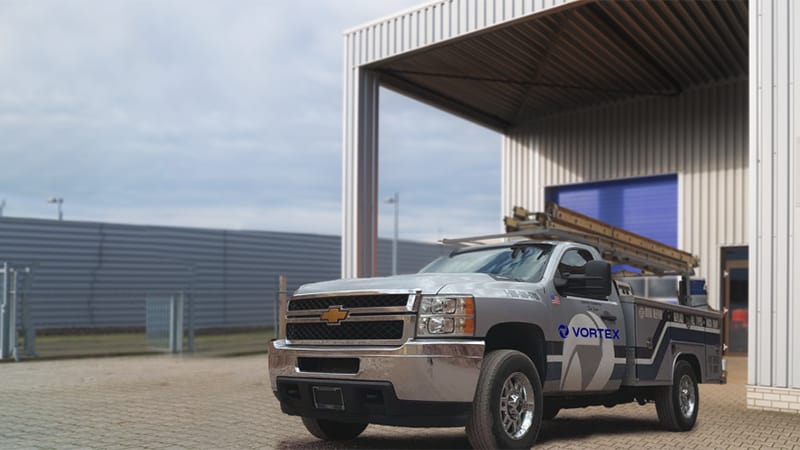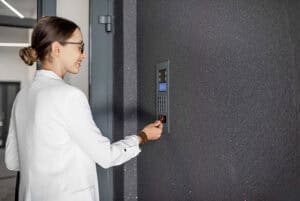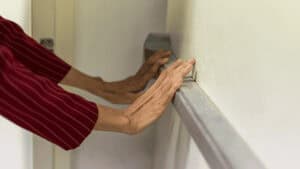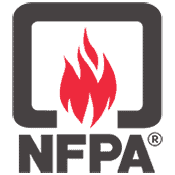Why Install a Hollow Metal Fire Door?
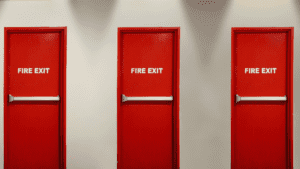 Hollow metal fire doors may be your building’s most critical feature. While other doors help move cargo or accommodate guests, fire doors save lives. They’re not only built to withstand heavy flames, but contain them as well. By slowing the spread of fire and smoke, they give tenants time to evacuate while also protecting them from harmful fumes and reducing property damage at the same time.
Hollow metal fire doors may be your building’s most critical feature. While other doors help move cargo or accommodate guests, fire doors save lives. They’re not only built to withstand heavy flames, but contain them as well. By slowing the spread of fire and smoke, they give tenants time to evacuate while also protecting them from harmful fumes and reducing property damage at the same time.
Fire doors are classified according to how long they can survive direct heat and flames. Tests are carried out in a furnace with sophisticated temperature and pressure controls that can reach as high as 1925°F, in order to simulate real emergency situations.
Ratings are assigned based on how long the door remains intact under these conditions. If it can only endure for twenty minutes, it’s given a 20 minute rating. By law, every commercial door is required to list its fire rating on a sticker mounted to the frame. Ratings start at 20 minutes and go all the way up to 45, 60, 90, and 180 minutes (3 hours).
Hollow metal fire doors are the only ones capable of achieving the maximum 180 minute rating. Because they’re made from steel, architects and distributors sometimes referred to them as steel doors instead, and the terms are often used interchangeably.
Insulation and Temperature Rise
Despite their name, hollow metal fire doors are not hollow. They are constructed from steel plates layered over a core of insulating materials designed to prevent heat transfer and keep temperatures from rising on the far side of the door.
By controlling the amount of heat escaping from burning floors, insulated fire doors allow people above and below the ignition area to evacuate safely using stairwells and passageways. Temperature rise ratings are based on the maximum temperature outside the door after thirty minutes of direct fire exposure.
Doors with a temperature rating of 250°F (the strongest possible rating), for example, will prevent the temperature outside the door from rising above 250°F for 30 minutes, even if there’s a roaring fire on the other side. A door’s temperature rating is determined by its core. There are five commonly available types.
- Honeycomb. Made from honeycomb cardboard that’s been hardened with special resins. Commonly used in interior doorways. It’s extremely durable and capable of achieving a 180 minute fire rating.
- Polystyrene. A solid foam block with higher insulation value than honeycomb. Normally comes with a three hour fire rating. Commonly used in exterior doorways.
- Polyurethane. Liquid foam injected into the door that rapidly expands to fill the space inside. Insulates better than honeycomb or polystyrene.
- Mineral. Made from a mix of noncombustible materials, unique to each manufacturer. An effective insulator capable of limiting temperature rise to 250°F.
- Steel-Stiffened. Steel support beams create channels inside the door that are filled with insulation, such as polystyrene or polyurethane. Common in high traffic areas where doors are likely to suffer repeated impacts.
Smoke Seals and Intumescent Strips
Fire doors should be a barrier when they’re closed and an avenue of escape when they’re opened. To that end, hollow metal fire doors are equipped with cold smoke seals and intumescent strips. While steel doors block fire directly, seals and strips prevent it from escaping through gaps in the frame.
Smoke seals aren’t technically part of the door, but the door assembly. They’re attached to the frame and look like they’re meant to cushion impact. Instead, they create a seal that prevents smoke from escaping. Rather than billowing out into the rest of the building, smoke collects around the door, loses energy, and gradually sinks to the floor.
Though not strictly necessary, National Fire Protection Association (NFTP) rules clearly state that a door cannot have a leakage rate greater than 3.0 cubic feet per minute per square foot, which is impossible to achieve without some type of seal.
Intumescent strips, on the other hand, are mandatory. During a fire, they expand and fill the gaps around the door in order to prevent flames from spreading to other parts of the building. While smoke seals are passive systems, intumescent strips only activate when exposed to high temperatures.
Other Features of Hollow Metal Fire Doors
Though fire protection remains their primary function, hollow metal fire doors offer several other benefits as well, including:
- Durability. Nothing lasts longer than steel. It resists wear and tear better than any other material. Steel fire doors are available in several different gauges: 20, 18, and 16. (Thickness increases as the gauge number decreases.) Light gauge steel is best suited to spaces with moderate foot traffic, where it won’t experience much use. Heavy gauge steel is best suited to spaces with heavy traffic, where doors frequently receive multiple direct impacts over the course of the day and require extra strength.
- Security. Contrary to popular belief, hollow metal doors absorb and disperse impacts better than solid steel, making them far harder to break, crack, or dent. They also transfer less force to the door edges, reducing damage to the surrounding frame. As a result, they provide the highest level of security from burglars and natural disasters, and the lowest maintenance costs.
- Adaptability. Steel doors are made from galvannealed steel (a coating of zinc-iron alloy), but that doesn’t mean they have a harsh, metallic appearance. In fact, steel doors are some of the most versatile on the market, available in a wide range of finishes, including wood veneers, making them one of the most attractive options for your building.
- Affordability. Steel is easier to process than wood or fiberglass, making hollow metal fire doors the least costly way to protect your building, staff, and tenants.
Installing Hollow Metal Fire Doors in Your Business
Vortex offers a full range of fire doors, frames, and hardware. Our products are manufactured to meet your rating requirements and integrate seamlessly into your building. Contact us today in order to learn more about our capabilities or begin upgrading your emergency exits.

